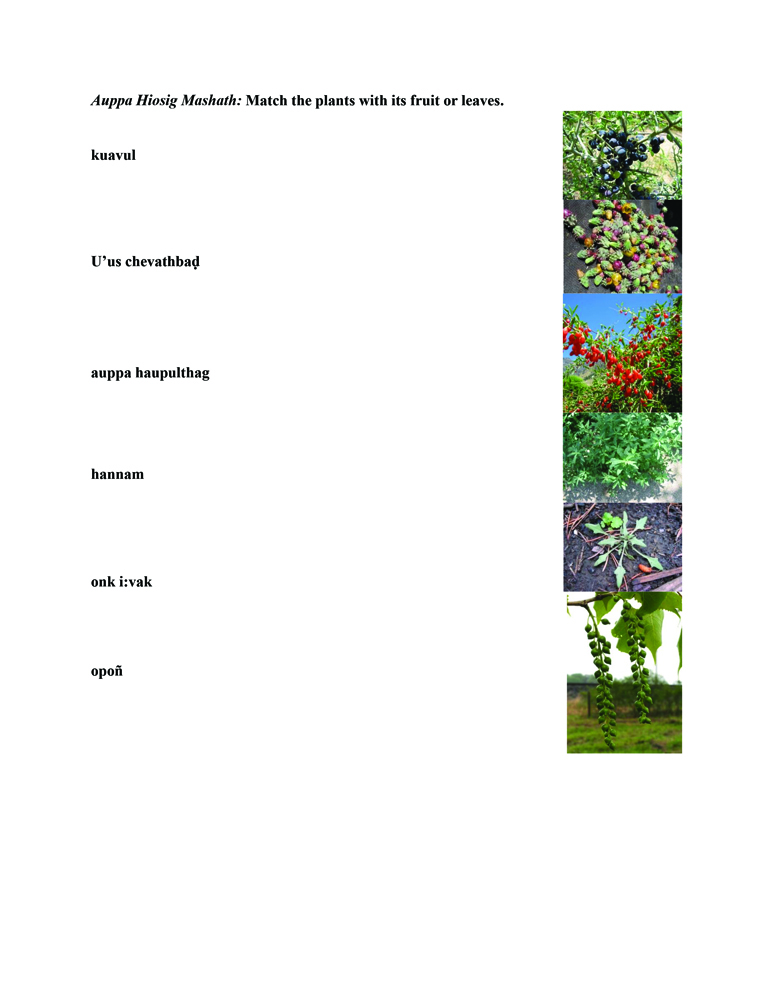HHC: Auppa Hiosig Mashath
Febraury 16, 2018
Huhugam Heritage Center
The name for this month references the blooming of the Cottonwood which produces pale green blossoms that hang from the branches. After pollination, these blossoms will develop into catkins, which will hang in grape-like bunches called auppa haupulthag and are easily recognized. This month several other plants start to produce fruits such as u’us chevathbaḍ (Graythorn) which produces small purple-black berries that are about the size of a pony bead and contain a hard seed-pit inside. Another plant that produces berries is kua:vul (Wolfberry) which produces juicy red berries that are about the size of a dime. O’otham named the area just north of St. Johns s-kua:vulik (place of many Wolfberries). When we were young we all helped Lulu’u (maternal Grandmother) gather the fruits of u’us chevathbaḍ and kua:vul. Lulu’u always knew where the plants grew that produced the best berries. We traveled in a small group of young boys and girls with Lulu’u leading the way with her ever-present walking stick carved from a sturdy piece of va:pai (dried cactus rib). We each carried an item of importance such as vaso (bucket), vakuañ (canteen) and i:ks (square of canvas). When we collected berries we placed the i:ks under the bush and beat the branches with sticks and Lulu’u would reach the higher branches with her longer va:pai. Once enough berries were shook lose we would gather up the i:ks by the corners and poured the berries into the vaso. We collected berries from four to six bushes, enough to fill the vaso to the brim. Once we had gotten home Lulu’u instructed our older sister to “Ha vapkuan heg u’us chevathbaḍ i:bthaj!” (Wash the u’us chevathbaḍ fruits!) Then we all went outside and sat under our tree and ate the fresh berries together. We spat out the hard seed-pits and ate only the soft sweet fruit pulp. When we went after kua:vul, Lulu’u always made kuavul hithoḍ (Wolfberry pudding) out of the berries, which we often had for desert after dinner. She always reminded us not to eat too many raw berries because “Tho chuchko heg ‘em thatham.” (It would stain your teeth black). Today many O’otham families still enjoy this practice and are transmitting this knowledge to the youth. This month our word match will feature plants that that are edible, or produce fruits. We encourage you to learn these words and use them in your everyday lives.




